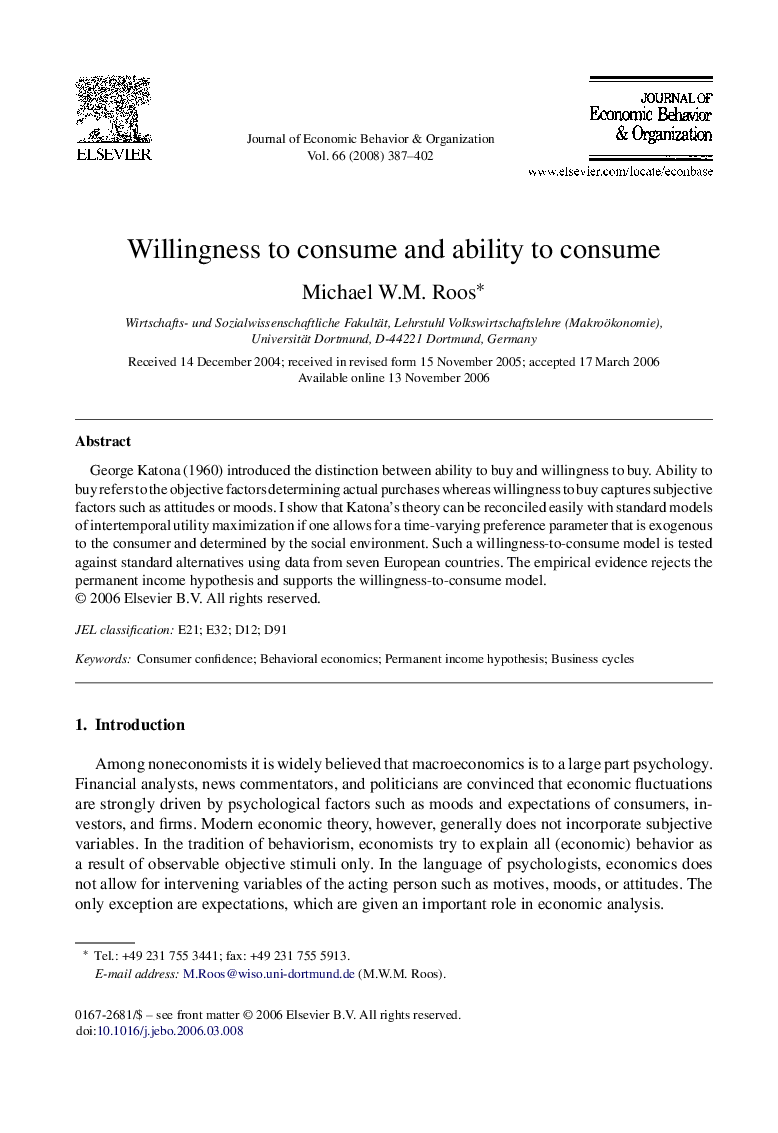| Article ID | Journal | Published Year | Pages | File Type |
|---|---|---|---|---|
| 884716 | Journal of Economic Behavior & Organization | 2008 | 16 Pages |
Abstract
George Katona (1960) introduced the distinction between ability to buy and willingness to buy. Ability to buy refers to the objective factors determining actual purchases whereas willingness to buy captures subjective factors such as attitudes or moods. I show that Katona’s theory can be reconciled easily with standard models of intertemporal utility maximization if one allows for a time-varying preference parameter that is exogenous to the consumer and determined by the social environment. Such a willingness-to-consume model is tested against standard alternatives using data from seven European countries. The empirical evidence rejects the permanent income hypothesis and supports the willingness-to-consume model.
Related Topics
Social Sciences and Humanities
Economics, Econometrics and Finance
Economics and Econometrics
Authors
Michael W.M. Roos,
